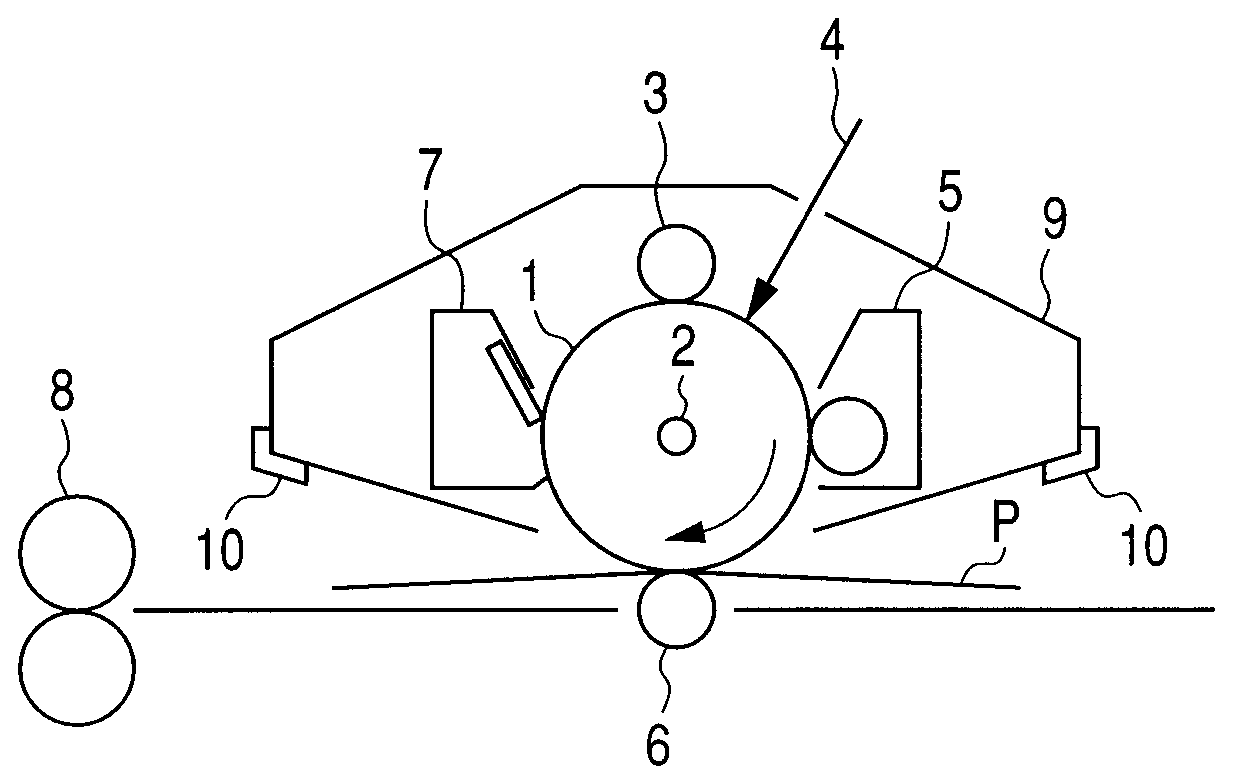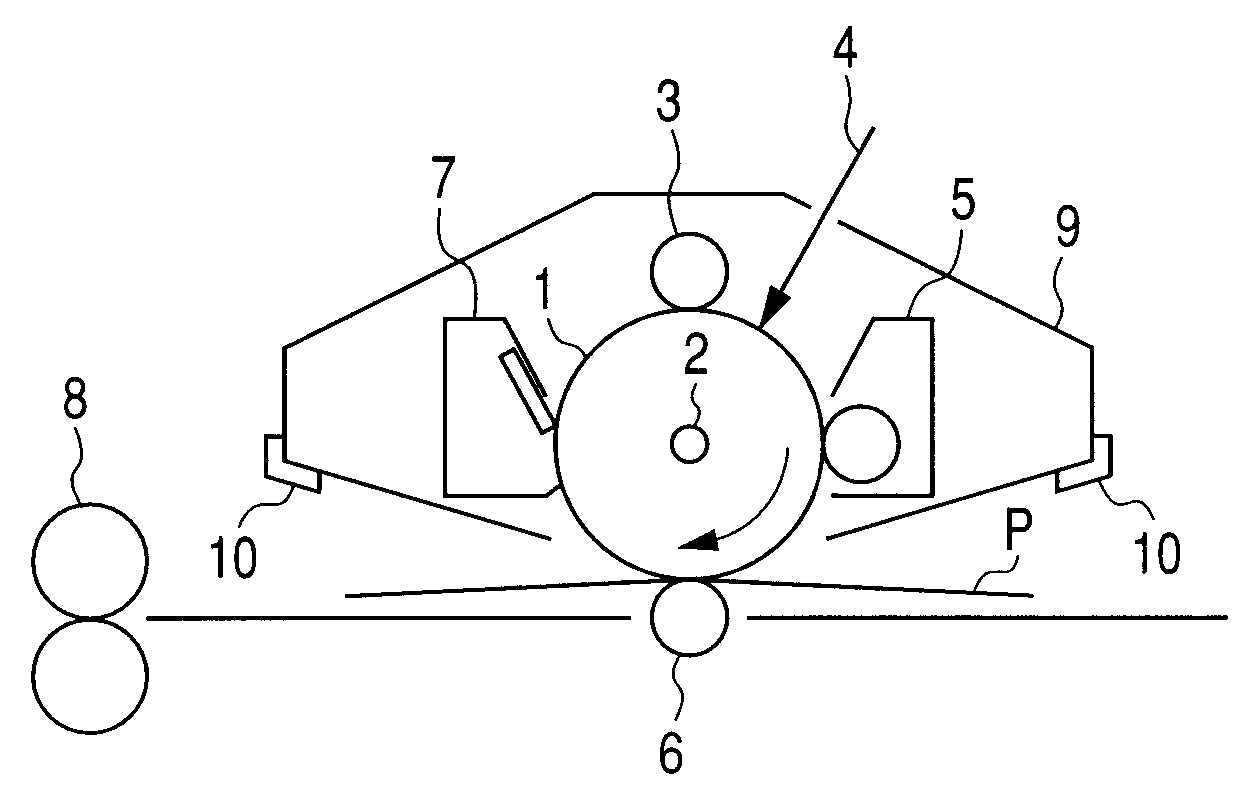Electrophotographic photosensitive member, process cartridge, and electrophotographic apparatus
a photosensitive member and electrophotography technology, applied in the direction of electrographic process, instruments, corona discharge, etc., can solve the problems of inferior potential stability, insufficient continuation of slip properties when electrophotographic photosensitive members are repeated, and insufficient potential stability of electrophotographic photosensitive members. achieve excellent potential stability
- Summary
- Abstract
- Description
- Claims
- Application Information
AI Technical Summary
Benefits of technology
Problems solved by technology
Method used
Image
Examples
example 1
[0139]An aluminum cylinder having a diameter of 30 mm and a length of 260.5 mm was used as a support.
[0140]Next, a coating liquid for a conductive layer was prepared by using 10 parts of SnO2-coated barium sulfate (conductive particles), 2 parts of titanium oxide (resistance regulating pigment), 6 parts of a phenol resin (binder resin), 0.001 parts of silicone oil (leveling agent), and a mixed solvent of 4 parts of methanol / 16 parts of methoxy propanol.
[0141]This coating liquid for a conductive layer was applied onto the support by dip coating, and cured (heat cured) at 140° C. for 30 minutes to form a conductive layer having a thickness of 15 μm.
[0142]Next, a coating liquid for an intermediate layer was prepared by dissolving 3 parts of N-methoxymethylized nylon and 3 parts of a copolymerized nylon in a mixed solvent of 65 parts of methanol and 30 parts of n-butanol.
[0143]This coating liquid for an intermediate layer was applied onto the conductive layer by dip coating, and dried a...
examples 2 to 45
[0166]Electrophotographic photosensitive members were produced and evaluated in the same manner as that in Example 1 except that the binder resin of the charge transport layer in Example 1 was changed as shown in Table 2. It was confirmed that in the formed charge transport layer, the domain made of the polyester resin A was included in the matrix made of the charge transporting material and the polyester resin C or the polycarbonate resin D. As an electrophotographic photosensitive member for comparison of the torque relative value was used an electrophotographic photosensitive member containing only a resin having another structure shown in Table 2 as the corresponding resin in the charge transport layer. The result is shown in Table 4.
PUM
| Property | Measurement | Unit |
|---|---|---|
| number average particle diameter | aaaaa | aaaaa |
| temperature | aaaaa | aaaaa |
| volume resistivity | aaaaa | aaaaa |
Abstract
Description
Claims
Application Information
 Login to View More
Login to View More - R&D
- Intellectual Property
- Life Sciences
- Materials
- Tech Scout
- Unparalleled Data Quality
- Higher Quality Content
- 60% Fewer Hallucinations
Browse by: Latest US Patents, China's latest patents, Technical Efficacy Thesaurus, Application Domain, Technology Topic, Popular Technical Reports.
© 2025 PatSnap. All rights reserved.Legal|Privacy policy|Modern Slavery Act Transparency Statement|Sitemap|About US| Contact US: help@patsnap.com



